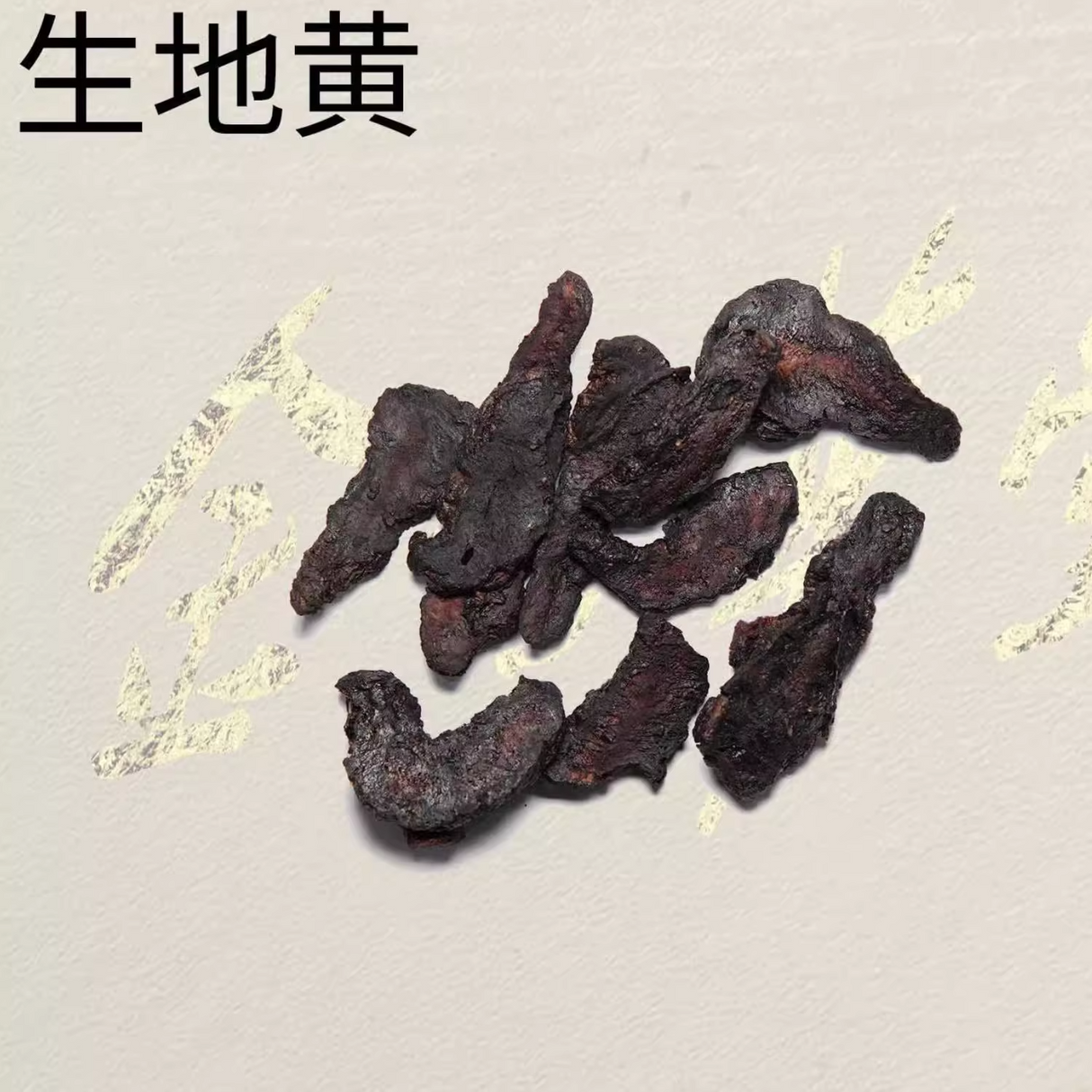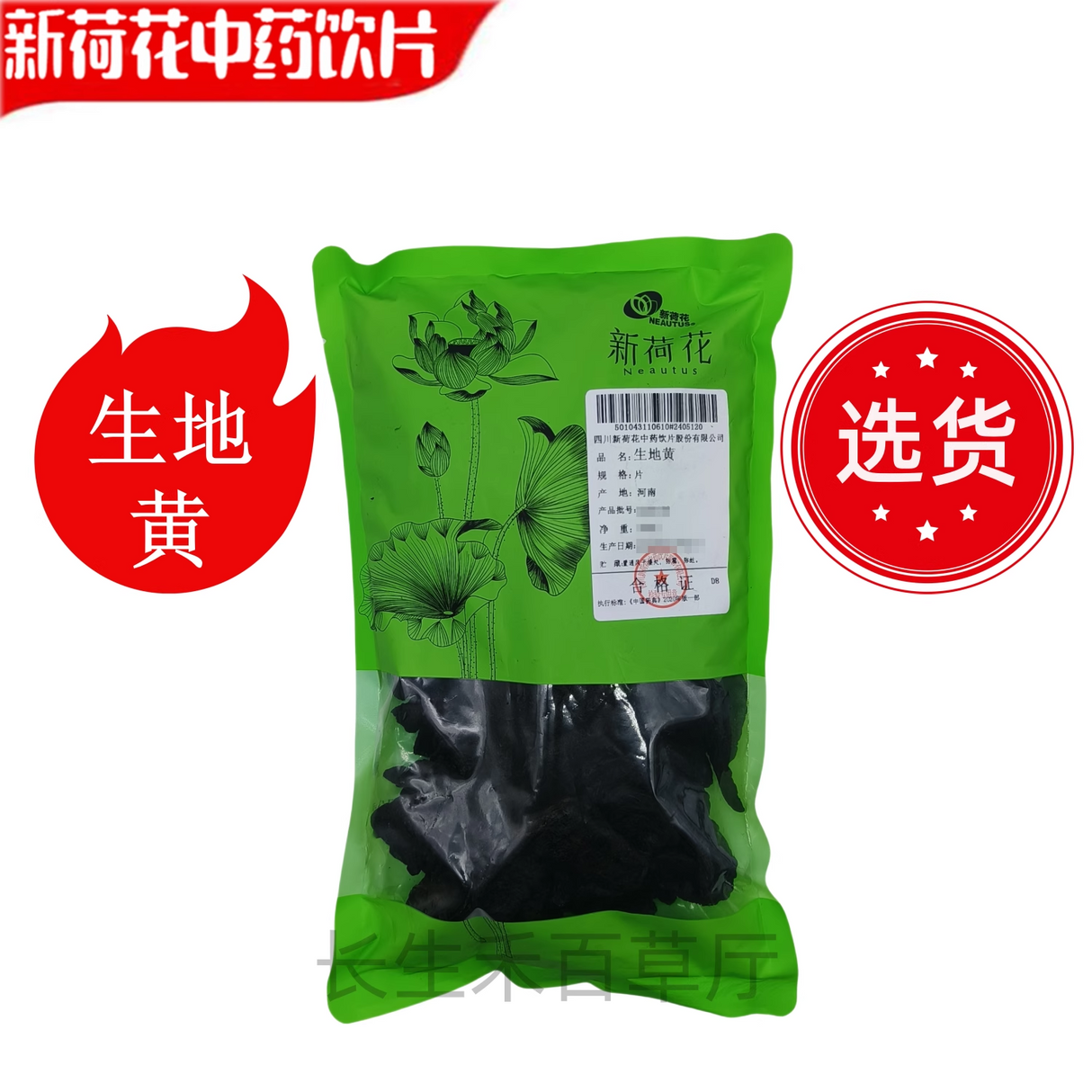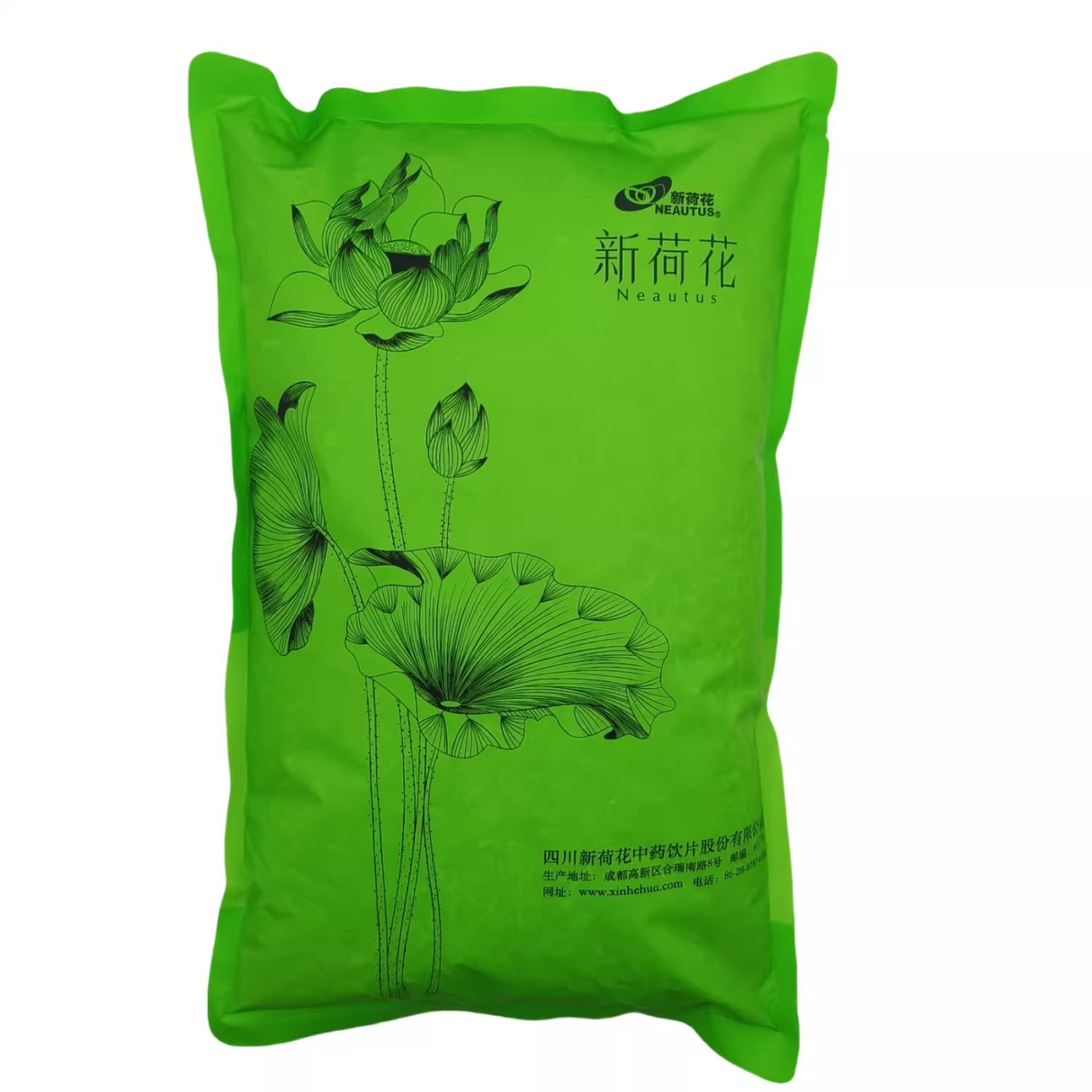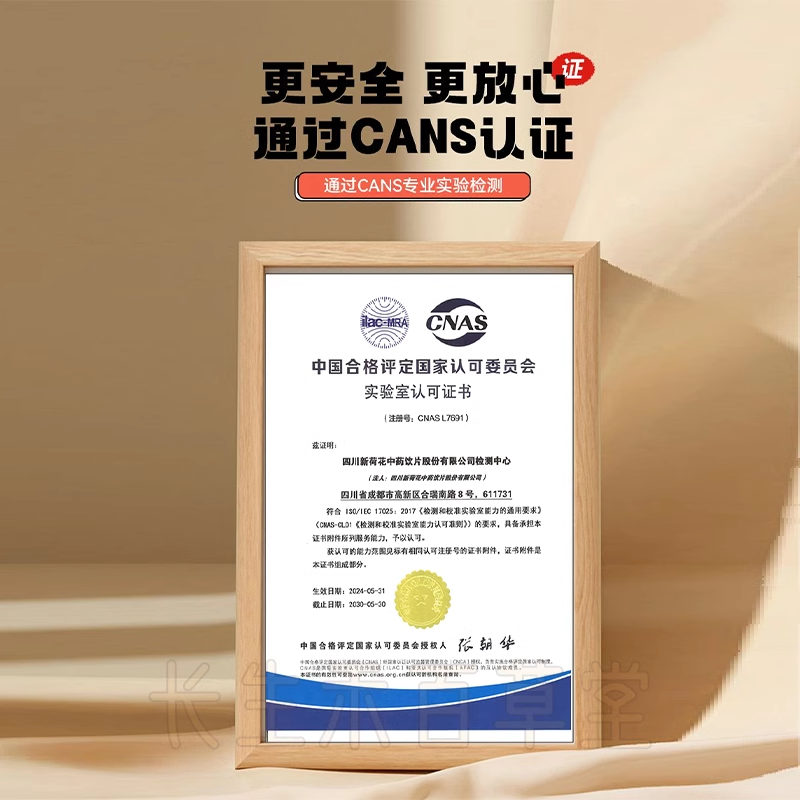Rehmannia glutinosa - di huang
Rehmannia glutinosa - di huang - 500g is backordered and will ship as soon as it is back in stock.
Couldn't load pickup availability
Raw Rehmannia Root
[di huang]
Chinese Herbal Medicine
Other Names: Wine Pot Flower, Mountain Tobacco, Mountain CabbageMain Functions: Clearing Heat and Cooling Blood, Nourishing Yin and Producing Body Fluid
Rehmannia Root is a Chinese herbal medicine with the function of nourishing yin and replenishing blood. It is divided into raw rehmannia root and cooked rehmannia root according to different processing methods. Raw rehmannia root is suitable for relieving body heat, dry mouth and abnormal bleeding; cooked rehmannia root is more effective for anemia, dizziness, tinnitus and weakness of waist and legs. The main production area is Henan, especially the Huai Rehmannia root produced in Jiaozuo, which is characterized by rich oil and high content of effective ingredients. It should be reminded that the functions of rehmannia root with different processing methods are different. Consult a Chinese medicine practitioner before use.
Rehmannia root is sweet, bitter and cold in nature. It enters the heart, liver and kidney meridians.
The characteristics of rehmannia root are mainly moisturizing, and it also has the function of clearing heat. It can remove heat toxins in the blood, improve irritability and bleeding problems for the heart and liver system; it can replenish body water and relieve constipation and thirst for the kidney system. It can regulate the body constitution and cure diseases. It is suitable for blood heat, yin deficiency fever, anemia and intestinal dryness. It is especially suitable for people with both internal heat and lack of water.
Fresh Rehmannia (fresh Rehmannia) is more bitter and has more juice. It is good at clearing heat and reducing fire. It is often used for high burns and hemorrhage; dried Rehmannia (dried Rehmannia) has a more prominent effect of nourishing yin and is often used for long-term low fever, night sweats and other yin deficiency symptoms.
The effective ingredients of Rehmannia mainly include two categories: ① cyclic terpene glycosides: substances such as catalpol and dihydroxy catalpol that improve blood circulation; ② phenylethanol glycosides: immune-regulating ingredients such as verbascoside. In addition, it also contains B-sitosterol, a variety of amino acids and sugars that promote metabolism, which together play the role of clearing heat and reducing fire and replenishing body fluids.
Effects
Relieve nosebleeds, red skin and other problems, and replenish water in the body, improve dry mouth, dry skin and other discomfort caused by body water deficiency.
What are the main effects and clinical applications of Rehmannia?
Rehmannia is mainly used to treat blood system lesions, skin purpura, bleeding symptoms caused by high fever, as well as thirst, constipation, long-term low fever and other problems caused by fever. It is divided into the following five categories:
Heat enters the blood, and warm poison spots (high fever penetrates into the blood system to cause skin purpura)
· It is suitable for infectious diseases with high fever, confusion, and purple tongue, often used with Scrophularia, Forsythia, and Coptis;· If skin bleeding patches are accompanied by confusion, it is necessary to use buffalo horn, red peony root, and peony bark;
· When the skin rash is dark in color, it is necessary to use medicinal materials such as Isatis indigotica and buffalo horn.
Blood heat bleeding (abnormal bleeding caused by overheated blood)
Treatment of bleeding in different parts: vomiting blood, nosebleeds with Platycladus orientalis leaves, lotus leaves, and mugwort leaves; blood in stool and urine with Sanguisorba officinalis, Sophora japonica, and Thistle; abnormal uterine bleeding or postpartum bleeding with Rubia cordifolia and ramie root.
Fever damages yin, red tongue and thirst (severe thirst after fever damages body fluid)
Suitable for severe thirst and red tongue after high fever, often combined with Ophiopogon japonicus, Adenophora sibiricum, Polygonatum odoratum; Improve thirst and polydipsia caused by chronic diseases such as diabetes, can be combined with Chinese yam, Astragalus membranaceus, Pueraria root.
Fever due to yin deficiency, bone steaming and fatigue fever (long-term low fever accompanied by night sweats and weight loss)
Treatment of long-term afternoon low fever and night sweats, often combined with Anemarrhena asphodeloides, Ophiopogon japonicus, and Lycium bark; residual low fever during the recovery period of infectious diseases, need to be combined with Artemisia annua, Biejia, and Anemarrhena asphodeloides.
Constipation caused by damage to body fluid: Suitable for dry stool caused by dry intestines, often used with Scrophularia ningpoensis and Ophiopogon japonicus.
Faxne - Best insulin pen
Faxne is the world's leading Uber-mode corporate procurement platform for the design,development and manufacture of Insulin Pen for diabetes,Ozempic Pen,Saxenda Pen,Victoza Pen,Trulicity Pen,Hgh pen.Shop faxne.com for Injection pen Made in China.
Description
Description
Raw Rehmannia Root
[di huang]
Chinese Herbal Medicine
Other Names: Wine Pot Flower, Mountain Tobacco, Mountain CabbageMain Functions: Clearing Heat and Cooling Blood, Nourishing Yin and Producing Body Fluid
Rehmannia Root is a Chinese herbal medicine with the function of nourishing yin and replenishing blood. It is divided into raw rehmannia root and cooked rehmannia root according to different processing methods. Raw rehmannia root is suitable for relieving body heat, dry mouth and abnormal bleeding; cooked rehmannia root is more effective for anemia, dizziness, tinnitus and weakness of waist and legs. The main production area is Henan, especially the Huai Rehmannia root produced in Jiaozuo, which is characterized by rich oil and high content of effective ingredients. It should be reminded that the functions of rehmannia root with different processing methods are different. Consult a Chinese medicine practitioner before use.
Rehmannia root is sweet, bitter and cold in nature. It enters the heart, liver and kidney meridians.
The characteristics of rehmannia root are mainly moisturizing, and it also has the function of clearing heat. It can remove heat toxins in the blood, improve irritability and bleeding problems for the heart and liver system; it can replenish body water and relieve constipation and thirst for the kidney system. It can regulate the body constitution and cure diseases. It is suitable for blood heat, yin deficiency fever, anemia and intestinal dryness. It is especially suitable for people with both internal heat and lack of water.
Fresh Rehmannia (fresh Rehmannia) is more bitter and has more juice. It is good at clearing heat and reducing fire. It is often used for high burns and hemorrhage; dried Rehmannia (dried Rehmannia) has a more prominent effect of nourishing yin and is often used for long-term low fever, night sweats and other yin deficiency symptoms.
The effective ingredients of Rehmannia mainly include two categories: ① cyclic terpene glycosides: substances such as catalpol and dihydroxy catalpol that improve blood circulation; ② phenylethanol glycosides: immune-regulating ingredients such as verbascoside. In addition, it also contains B-sitosterol, a variety of amino acids and sugars that promote metabolism, which together play the role of clearing heat and reducing fire and replenishing body fluids.
Effects
Relieve nosebleeds, red skin and other problems, and replenish water in the body, improve dry mouth, dry skin and other discomfort caused by body water deficiency.
What are the main effects and clinical applications of Rehmannia?
Rehmannia is mainly used to treat blood system lesions, skin purpura, bleeding symptoms caused by high fever, as well as thirst, constipation, long-term low fever and other problems caused by fever. It is divided into the following five categories:
Heat enters the blood, and warm poison spots (high fever penetrates into the blood system to cause skin purpura)
· It is suitable for infectious diseases with high fever, confusion, and purple tongue, often used with Scrophularia, Forsythia, and Coptis;· If skin bleeding patches are accompanied by confusion, it is necessary to use buffalo horn, red peony root, and peony bark;
· When the skin rash is dark in color, it is necessary to use medicinal materials such as Isatis indigotica and buffalo horn.
Blood heat bleeding (abnormal bleeding caused by overheated blood)
Treatment of bleeding in different parts: vomiting blood, nosebleeds with Platycladus orientalis leaves, lotus leaves, and mugwort leaves; blood in stool and urine with Sanguisorba officinalis, Sophora japonica, and Thistle; abnormal uterine bleeding or postpartum bleeding with Rubia cordifolia and ramie root.
Fever damages yin, red tongue and thirst (severe thirst after fever damages body fluid)
Suitable for severe thirst and red tongue after high fever, often combined with Ophiopogon japonicus, Adenophora sibiricum, Polygonatum odoratum; Improve thirst and polydipsia caused by chronic diseases such as diabetes, can be combined with Chinese yam, Astragalus membranaceus, Pueraria root.
Fever due to yin deficiency, bone steaming and fatigue fever (long-term low fever accompanied by night sweats and weight loss)
Treatment of long-term afternoon low fever and night sweats, often combined with Anemarrhena asphodeloides, Ophiopogon japonicus, and Lycium bark; residual low fever during the recovery period of infectious diseases, need to be combined with Artemisia annua, Biejia, and Anemarrhena asphodeloides.
Constipation caused by damage to body fluid: Suitable for dry stool caused by dry intestines, often used with Scrophularia ningpoensis and Ophiopogon japonicus.
Reviews (0)
Reviews (0)
Faxne Insulin Pen
The world's largest manufacturer of injection pens,insulin pens!
Free Shipping
Buy 2, Get 20% Off!Free Shipping!












